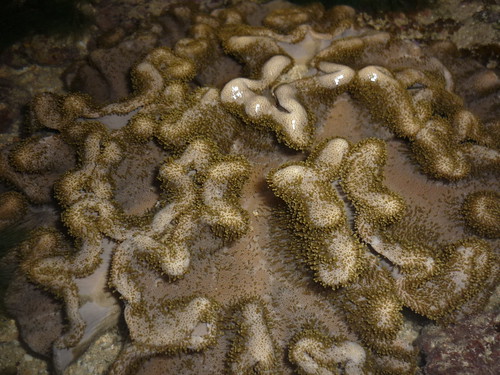
Today was one of my last low tide trips for the year, and because I had not explored the shores of Sentosa for almost 6 months, I decided to check out Tanjung Rimau, a place with a great deal of sentimental value for me.
This time was a little different though, since I was joined by my good friend Valerie, who also happens to be this year's winner for the Miss Earth Singapore pageant.
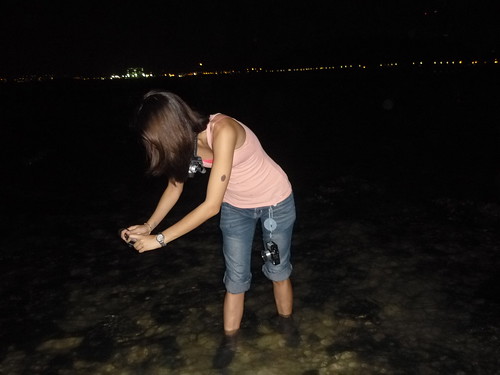
Here's a photo of Valerie on her virgin shore trip.
We made our way down to the shore at dusk, and as we waited for the tide to recede, we wandered amongst the rocks, looking at the various snails that lived on the high shore.
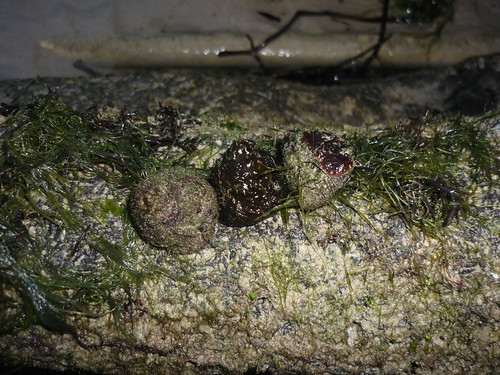
Such as these spotted top shells (Trochus maculatus).
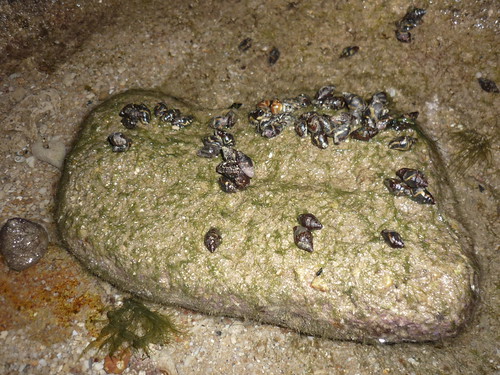
And these lightning dove snails (Pictocolumbella ocellata). Other snails that we looked at included toothed top shell (Monodonta labio), chameleon nerite (Nerita chamaeleon), spiny drill (Thais bitubercularis), dwarf turban snail (Turbo bruneus), and ribbed turban snail (Turbo intercostalis).
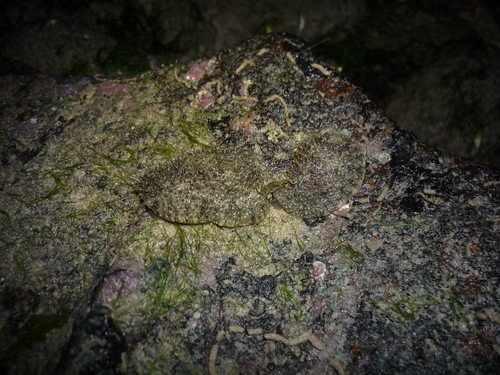
We also spotted several big pimply onch slugs (F. Onchidiidae) crawling about on the rocks.
A while later, we ventured into the shallows, where we encountered large numbers of crabs.
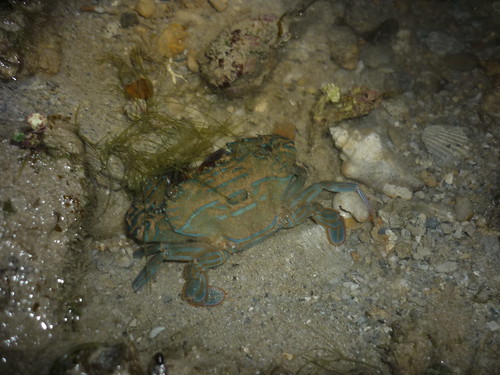
Blue swimming crabs (Thalamita danae) and blue-spined swimming crabs (Thalamita prymna) were extremely common, but as usual, they were so shy and skittish that most of them refused to stay still long enough to be photographed. This particular crab was stranded in a small pool.
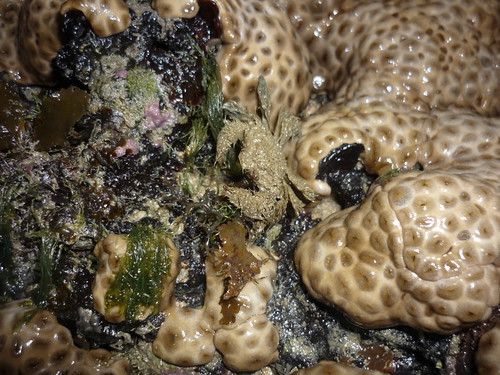
Strangely enough, we saw only a single common hairy crab (Pilumnus vespertilio). Either we were not alert enough to see more, or they were all in hiding.
As you can see from the photo, the common hairy crab was perched near a mass of sea mat zoanthids (Palythoa tuberculosa). Was it about to feed on them? The common hairy crab is a generalist omnivore, and is known to feed on zoanthids, which apparently render the crab mildly poisonous and unappetising to potential predators.
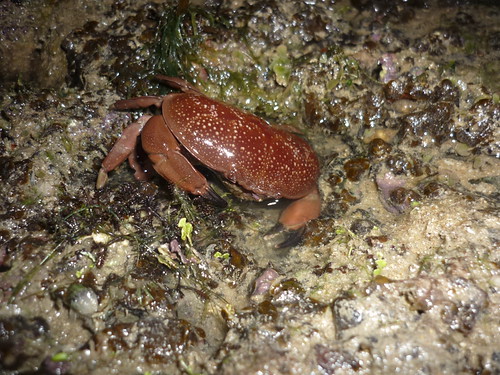
A crab that we kept seeing today was the red egg crab (Atergatis integerrimus). We saw at least 6 of them! This species is highly poisonous.
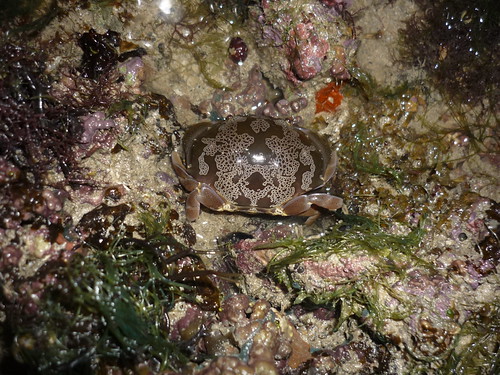
Somewhat less common was the floral egg crab (Atergatis floridus); we found 2 over the course of the visit. Like the red egg crab, it too is highly poisonous.

A very special crab find for me was this red-eyed reef crab (Eriphia ferox). If I'm not wrong, this is my first ever sighting of this species.
Other crustaceans that we encountered included plenty of sea slaters (Ligia sp.) on the high shore, as well as glass shrimp (Palaeomon sp.) and red-nose shrimp (Periclemenes sp.) in the shallows. Of course, it was impossible to miss the loud clicking of the snapping shrimps (F. Alpheidae), even though they remained hidden in their burrows.
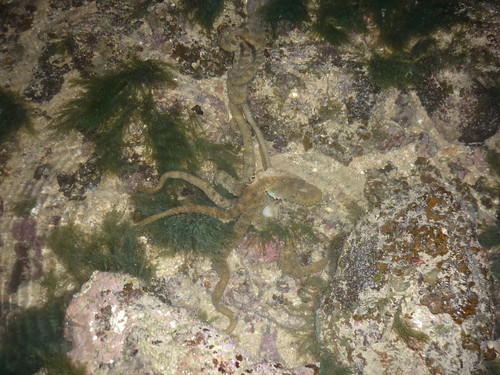
These shores are also very good for spotting two-spot reef octopus (F. Octopodidae). Both Valerie and I were extremely thrilled when we encountered a pair that seemed to be mating! Another first sighting for me.
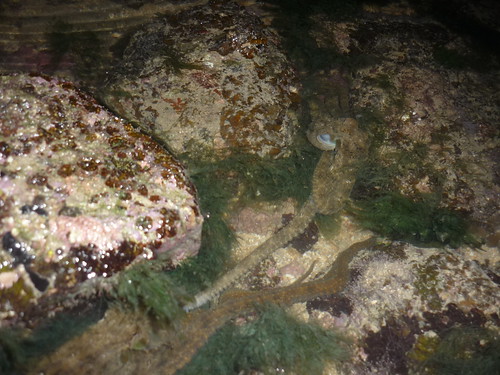
In male cephalopods, one of the arms, known as the hectocotylus, is modified to storm sperm packets, which he then transfers to the female by inserting this arm into her mantle cavity. You can see how the male in this photo is literally being dragged all over the place as the female moves around.
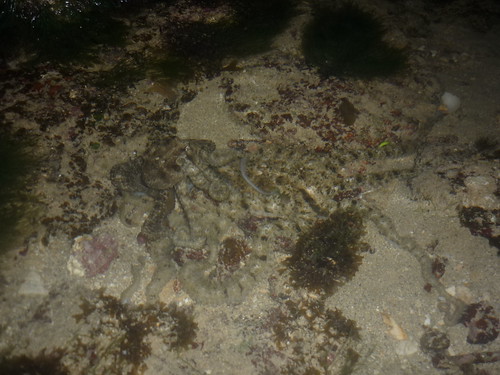
Later on, we saw a second mating pair of octopus. The smaller male spent quite a bit of time riding on top of the female's head. If octopus could talk, I can imagine the female exclaiming, "Get off! I can't see!"

Another special find was this giant top shell (Tectus niloticus).
We didn't have much luck finding black long sea cucumber (Holothuria leucospilota), and only managed to find a small one hiding beneath a rock.
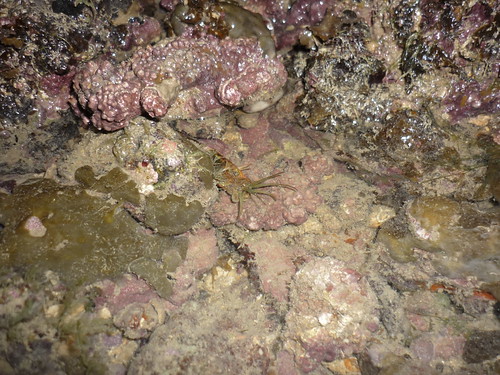
We were however lucky enough to find another long (and disgusting) creature hiding amongst the coral rubble, the giant reef worm (Eunice aphroditois). I saw these worms on 3 separate occasions, but only managed to take 1 photo of the face. Despite their size, these worms are extremely shy and will immediately dart back into their burrows upon the slightest disturbance.
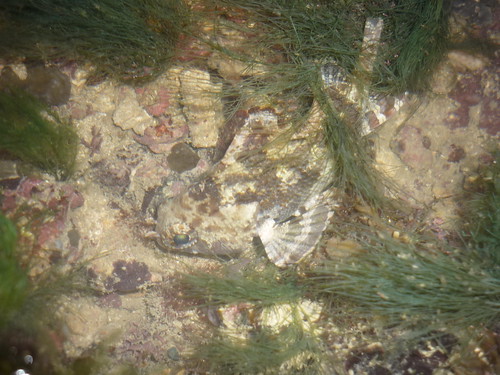
We spotted quite a lot of fish such as young mullet (F. Mugilidae) and tropical silversides (Atherinomorphus duodecimalis), but these usually swam off instantly. This false scorpionfish (Centrogenys vaigiensis) stayed still long enough for us to snap a few shots.
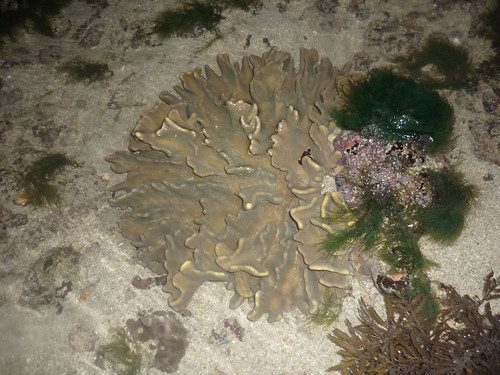
We didn't really have much time to walk around looking at corals, but we did find quite a few colonies of soft corals, such as this pinwheel leathery coral (F. Alcyoniidae).
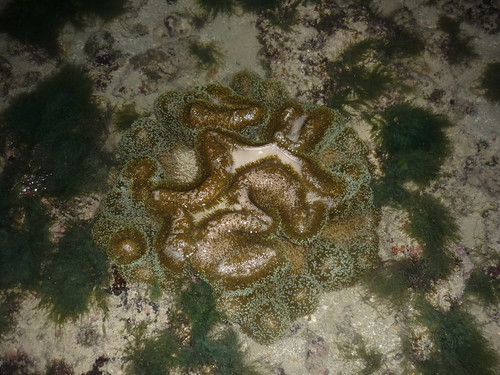
As well as several omelette leathery corals (F. Alcyoniidae).
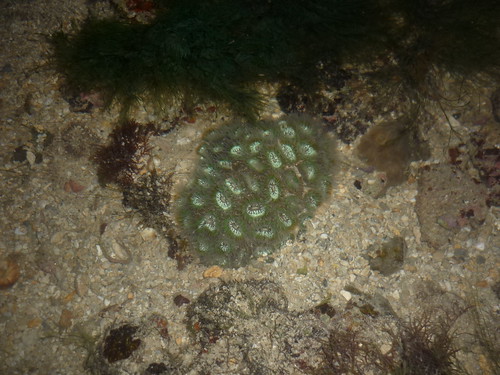
I think this is a big o-ring favid coral (F. Faviidae).
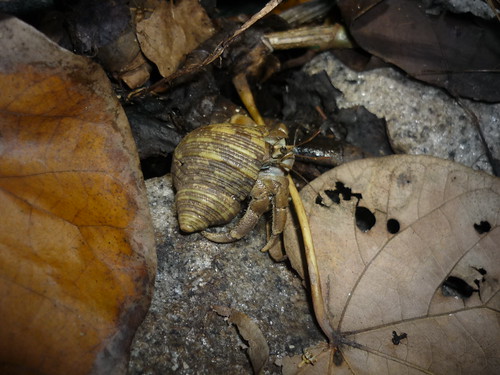
The tide rose, but just before we went back to wash up, we spent some time looking at the land hermit crabs (Coenobita cavipes) crawling about on the seawall.

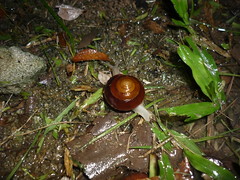
Valerie had to go off first, and as I was washing my booties, I came upon a few of these terrestrial snails.
I decided to spend just a bit of time exploring one of the islets off Siloso Beach, which are another very special place for me. The tide was steadily rising, and I was too lazy to dig out my net and container from my bag, but I could still walk around in the shallows and see what I could find.
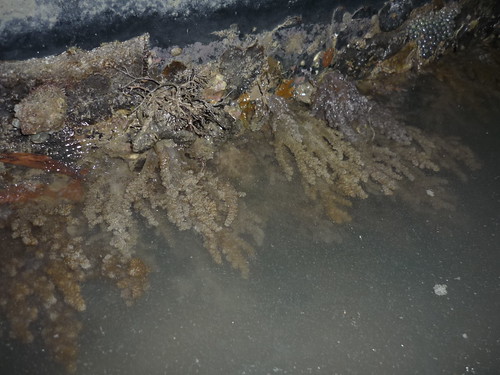
As usual, the bridge is festooned with all sorts of soft corals, zoanthids, sponges, ascidians, bivalves, and other sessile organisms.
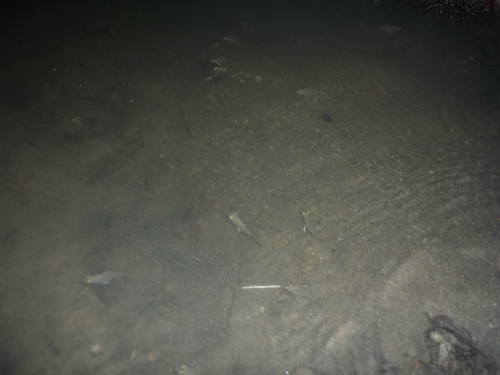
There were plenty of fish in the lagoons, the usual cast of characters that I'd seen on virtually all of my previous visits; tropical silverside, larger adult mullet, sand whiting (F. Sillaginidae), Kops' glass perchlet (Ambassis kopsii), all sorts of halfbeaks (F. Hemirhamphidae), orbicular cardinalfish (Sphaeraemia orbicularis), and shadow goby (Acentrogobius nebulosus). I caught a glimpse of a medium-sized striped eeltail catfish (Plotosus lineatus) as it swam around close to the surface, then darted out of sight.
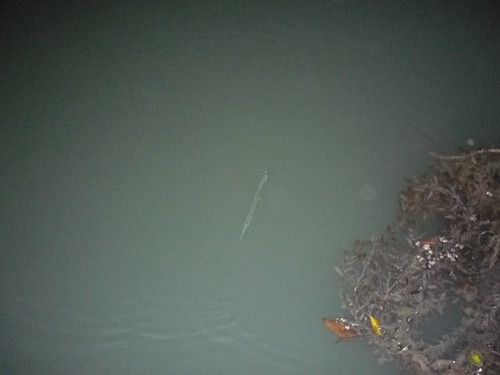
However, this was the first time I had seen banded needlefish (Strongylura leiura) in these lagoons.
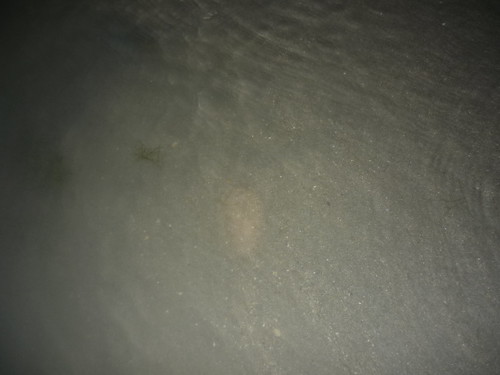
Another fascinating find was this peacock sole (Pardachirus pavoninus) which I spotted from the bridge, hiding on the sand at Siloso Beach itself. I tried to get closer to take more photos, but it slipped beneath the bridge. I wish I had taken out my net and container, then I might have been able to ambush it and take a bunch of clear and decent (if somewhat unnatural-looking) shots. So we'll have to content ourselves with this horrible picture.
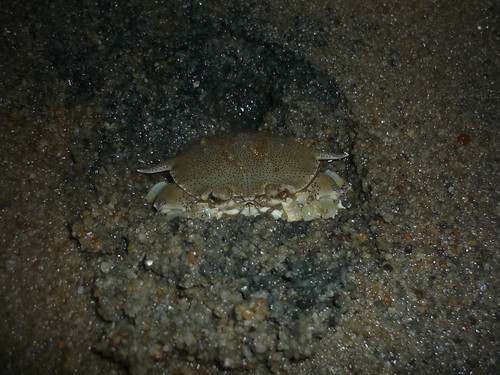
There were plenty of crustaceans here as well, such as this spotted moon crabs. There were also quite a few blue-spined swimming crabs, flower crabs (Portunus pelagicus), and blue-tailed prawns (F. Penaeidae).
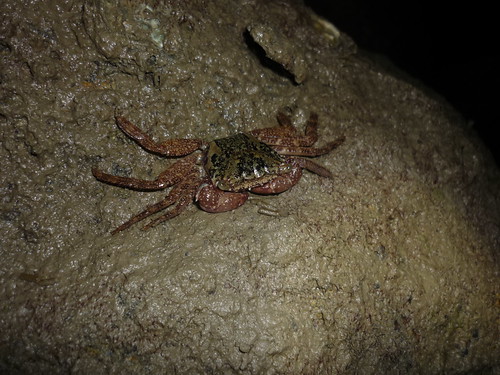
Purple climber crabs (Metopograpsus sp.) were common on the rocks and the bridge.
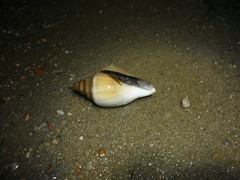
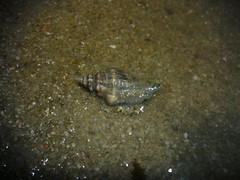
There were quite a few pearl conch (Laevistrombus turturella) and black-lipped conch (Canarium urceus) half-buried in the silt. Other snails seen included spiral melongena (Pugilina cochlidium), as well as the usual hordes of zoned horn snails (Batillaria zonalis).
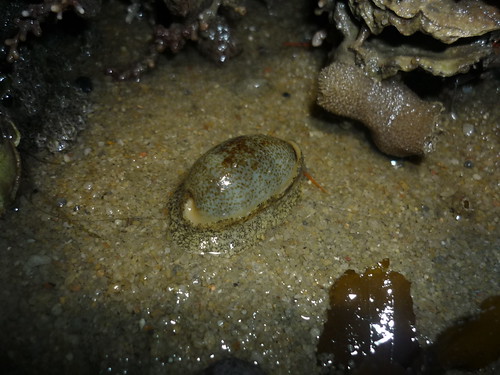
Here was a very surprising and special find, a live wandering cowrie (Cypraea errones).

It was quite a nice coincidence, as I had just learnt that this species has a dark spot close to the front end of the shell, unlike the very similar ovum cowrie (Cypraea ovum).
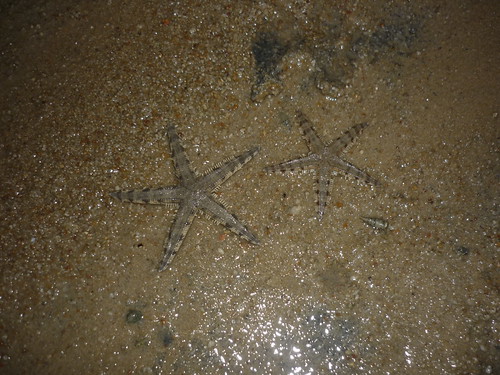
It is always nice to find the common sea stars (Archaster typicus). I was unable to find the colony of adults that I'd found on previous occasions; I suspect that the entire group was already well submerged by the rising tide by the time I arrived. However, I did find a small group of juveniles, which is a good sign. This either means that this population of sea stars is reproducing, or that larvae are drifting in from elsewhere and settling on this shore.

Just before I was about to call it a night and head for home, I found this tiny polyclad flatworm (Polycladida). I have no idea what it is, although my hunch is that it is a species of Pseudobiceros.
Is this another unknown species? It reminds me of the large unidentified flatworm I had found at Siloso Beach earlier this year, just that it lacks the orange margin possessed by the latter. What other secrets lay hidden in the murky depths of these lagoons?
It was getting late, so I headed back towards the Beach Station to take the bus.
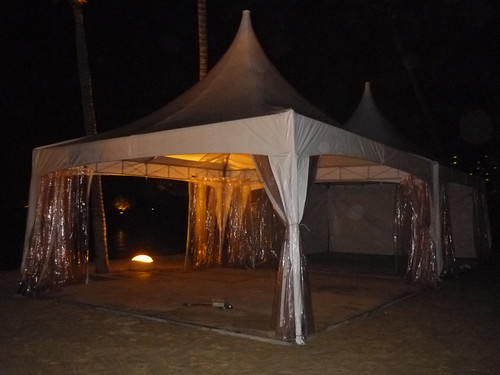
Much of Siloso Beach is being set up for ZoukOut 2009, which takes place next Saturday. Hopefully, the marine life will not be too badly affected. But then again, the creatures living in this lagoon must be very tough indeed. They already receive a daily auditory and visual assault from Café del Mar and Songs of the Sea, have survived the annual ZoukOut and Siloso Beach Party, and it seems that they have survived the construction of the MegaZip, in addition to 2 new clubs along the beach, Azzura and Wave House Sentosa.
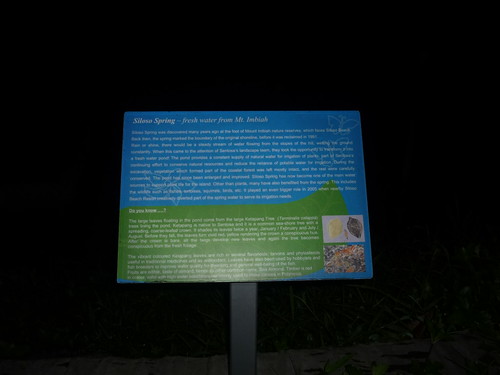
It was nice to walk past the pond and see this sign. Now I know why the pond exists in the first place.
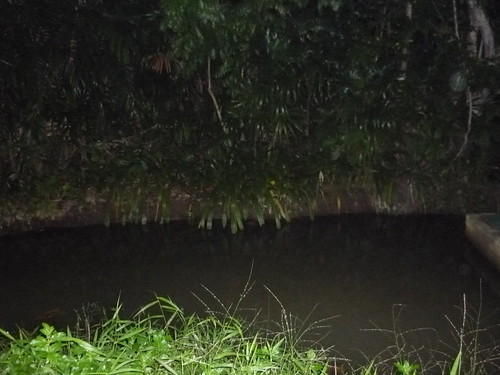
All around the pond, I could hear the calls of common Asian toad (Duttaphrynus melanostictus) and dark-sided chorus frog (Microhyla heymonsi), although they remained out of sight.
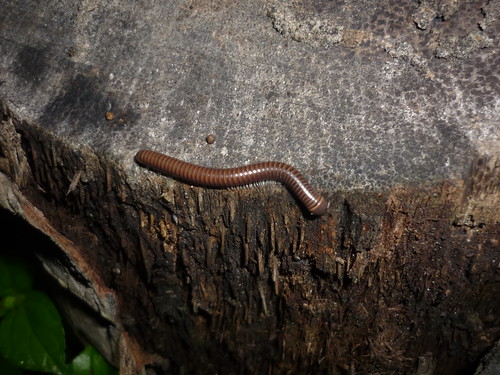
This millipede wasn't so shy though.
I didn't really get to explore the shores to my heart's content, but I was definitely very thrilled to see that these familiar shores at Sentosa still appeared to be doing quite well. No matter how many times I visit, it seems that there is always something new and surprising.
Such is the magic and beauty of the shores, that compels one to visit repeatedly, not quite knowing what to expect. You can never visit a place too often.